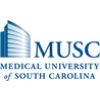Job Description
The Certified Medical Assistant reports to the Outpatient Clinic Manager. Interviews patients, measures vital signs pulse rate, temperature, blood pressure, weight, and height), and records or inputs information to patients' medical record.
Prepares treatment rooms for examination of patients.
Basic computer skills required. Annual competencies are required to be maintained. Possess ability to understand and implement a variety of detailed instructions in the execution of therapeutic procedures and ability to make accurate physical observation of patients.
Must communicate effectively both verbally and in writing.
Minimum Education and Experience :
High school diploma or equivalent. Completion of an accredited medical assisting program with one year of patient care experience preferred.
Required Licensure, Certifications, Registrations :
Must be certified through the American Medical Technologist (AMT) or American Association of Medical Assistants (AAMA) or National Health career Association (NHA) or MedCA as a Certified Clinical Medical Assistant (CCMA) or Certified Medical Assistant (CMA) or National Association for Health Professionals (NAHP).
Current Basic Life Support (BLS) required, either a certification from an American Heart Association (AHA) BLS for Healthcare Providers (or AHA recognized equivalent) or an American Red Cross CPR / AED for Professional Rescuer and Healthcare Provider.
Additional Job Description
Benefits :
- Health, dental, vision, and life insurance
- Employer Sponsored Retirement Plan
- Paid time off and extended sick leave
- Paid Parental Leave
- Disability insurance plan options
- Continuous professional and clinical training
- Competitive pay
- Annual Merit Increase
- Wellbeing resources
- Tuition Reimbursement
- Employee perks and discounts
- Employee referral program
- Flexible schedule options
- Certification incentive program
Physical Requirements :
Ability to perform job functions while standing. (Continuous) Ability to perform job functions while sitting. (Continuous) Ability to perform job functions while walking.
Continuous) Ability to climb stairs. (Infrequent) Ability to work indoors. (Continuous) Ability to work outside in temperature extremes.
Infrequent) Ability to work from elevated areas. (Frequent) Ability to work in confined / cramped spaces. (Frequent) Ability to perform job functions from kneeling positions.
Infrequent) Ability to bend at the waist. (Continuous) Ability to twist at the waist. (Frequent) Ability to squat and perform job functions.
Frequent) Ability to perform "pinching" operations. (Frequent) Ability to perform gross motor activities with fingers and hands.
Continuous) Ability to perform firm grasping with fingers and hands. (Continuous) Ability to perform fine manipulation with fingers and hands.
Continuous) Ability to reach overhead. (Frequent) Ability to perform repetitive motions with hands / wrists / elbows and shoulders.
Continuous) Ability to fully use both legs. (Continuous) Ability to use lower extremities for balance and coordination.
Frequent) Ability to reach in all directions. (Continuous) Ability to lift and carry 50 lbs. unassisted. (Infrequent) Ability to lift / lower objects 50 lbs.
from / to floor from / to 36 inches unassisted. (Infrequent) Ability to lift from 36" to overhead 25 lbs. (Infrequent) Ability to exert up to 50 lbs.
of force. (Frequent) Examples include : To transfer a 100 lb. patient that cannot assist in the transfer requires 50 lbs.
of force. For every 100 additional pounds, assistance will be required from another healthcare worker. 20 lbs. of force are needed to push a 400 lb.
patient in a wheelchair on carpet. 25 lbs. of force are required to push a stretcher with a patient with one hand. Ability to maintain 20 / 40 vision, corrected, in one eye or with both eyes.
Continuous) Ability to see and recognize objects close at hand or at a distance. (Continuous) Ability to match or discriminate between colors.
Continuous) Ability to determine distance / relationship between objects; depth perception. (Continuous) Good peripheral vision capabilities.
Continuous) Ability to maintain hearing acuity, with correction. (Continuous) Ability to perform gross motor functions with frequent fine motor movements.
Continuous) Ability to deal effectively with stressful situations. (Continuous) Ability to work rotating shifts. (Frequent) Ability to work overtime as required.
Frequent) Ability to work in a latex safe environment. (Continuous) Ability to maintain tactile sensory functions. (Continuous) *(Selected Positions) *Ability to maintain good olfactory sensory function.
Continuous) *(Selected Positions) *Ability to be qualified physically for respirator use, initially and as required.
If you like working with energetic enthusiastic individuals, you will enjoy your career with us!
The Medical University of South Carolina is an Equal Opportunity Employer. MUSC does not discriminate on the basis of race, color, religion or belief, age, sex, national origin, gender identity, sexual orientation, disability, protected veteran status, family or parental status, or any other status protected by state laws and / or federal regulations.
All qualified applicants are encouraged to apply and will receive consideration for employment based upon applicable qualifications, merit and business need.
Medical University of South Carolina participates in the federal E-Verify program to confirm the identity and employment authorization of all newly hired employees.
For further information about the E-Verify program








